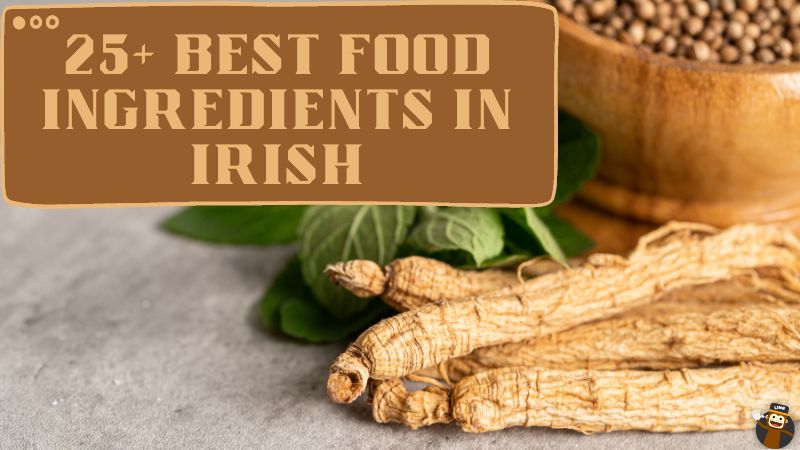Food is one of the pivotal aspects of any particular region as it makes an important part of the culture or history of that region. Like many other factors that contribute to making the identity of a society, food culture has represented itself as one of the most obvious and essential factors which contribute to making culinary tradition. But what makes the food is more important i.e. the food ingredients. In this blog post, we will learn all about the food ingredients In Irish cuisine, so let’s get started!
Food Culture In Ireland
The food in a particular area creates the food identity of that region. Different cultures have different food identities because of the traditional foods and culinary practices. Some cultures have a homogenous food identity because they share a common history of food practices. Like many cultures, Ireland has a unique food culture.
The food of Ireland was not originally considered unique and Irish traditions for food were not particularly seen as an indigenous identity because of various conquests and socio-political changes which in return affected the food practices as well. But the world has now recognized its food, cuisine, and practices as an identity of Ireland.
The people of Ireland are known to be humble, hospitable, and their food is considered to have a taste of their humbleness and hospitality. Most of the ingredients in Irish cuisine are indigenous to Ireland thus Irish cuisine is known for its freshness and nutritional qualities. Even the Irish cuisine made in case of emergency is rich in healthy ingredients.
Food Ingredients In Irish Cuisine
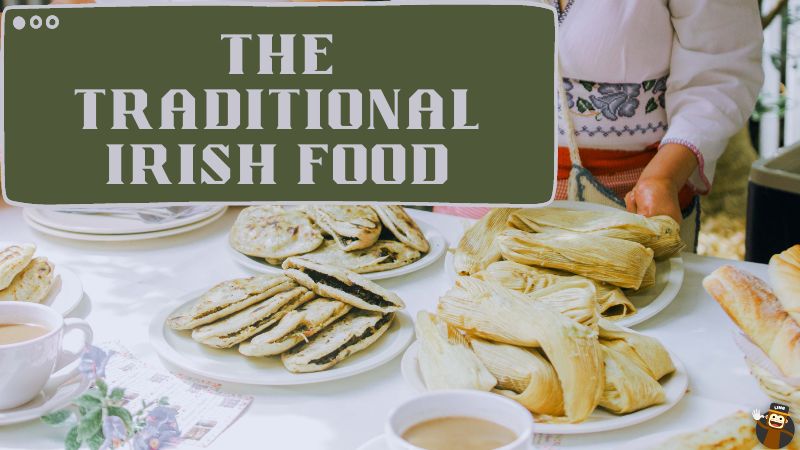
Ireland has a long history and the food culture goes back centuries to create the food identity that it has today. Ireland is an agricultural country therefore it mostly focused on growing grains (gráinní) and fruits (torthaí) and was dependent on cattle farming. Most of the foods consisted of grains (gráinní), cereals, milk, and meat.
Different cultures kept mixing and merging into it till it has grown to create their own regional or indigenous identity in food. Instead of becoming a huge disaster, it became perfection!
History Of Food Ingredients In Ireland
The history of Irish cuisine goes back to 8000BC while the potato, which is considered the staple and the only food item consumed and cultivated in Ireland, came 400 years ago. Most of the people were living on the coasts so they collected their food through hunting and gathering. They would live on seafood and wild animals.
The most famous food in Irish food history is the potato. Ireland became famous the world round during the great potato famine which began in 1845 and lasted for 7 years.
Ireland’s mythology also plays a key role in tracing their food traditions as beef was a crucial part of their tales. Cattle symbolized the social status of people as kings and queens were told rich as they used to have a large number of cattle. Later on, when Columbus discovered the New World, new food items like tomatoes, chilies, potatoes, corn, etc., were discovered of which the Irish world was unaware.
With the increase of food production and trade, the population of Ireland grew in no time and it creased from 1.2 million in 1590 to 8.4 million in 1841.
Basic Irish Food Ingredients
Ireland has a variety of food ingredients and the most basic ingredients include potatoes, dairy products, seafood, bread, root vegetables, and meat.
Potato (Prátaí )
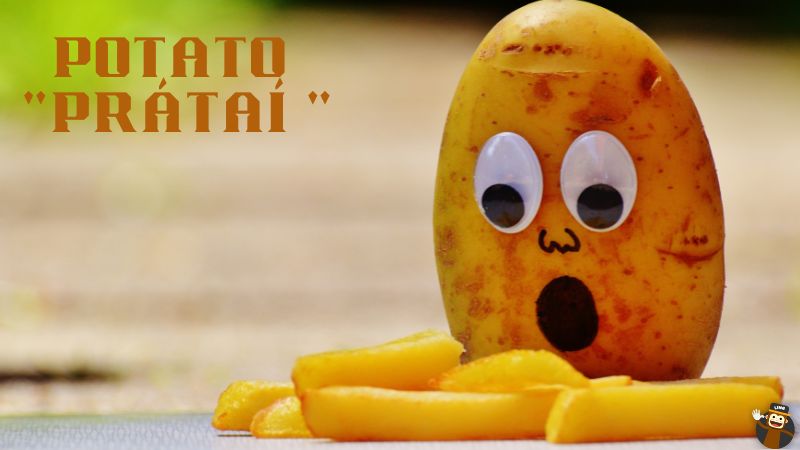
Prátaí (potato) is a staple food of Ireland but it is a stereotype that it is the only food of Irish people. Their favor for potatoes is quite logical as the colonial rule of England over Ireland left them impoverished. The only crop they could afford in the smaller number of resources was potato (prátaí).
It became central to Irish cuisine in the 16th century and thus has made the largest share in their food identity. It is the emblem of their society that has become part of their psyche. It is highly palatable, sustainable, and available all year round. It is considered a very healthy ingredient in the Irish Cuisine.
The climate of Ireland is suitable for the cultivation of potatoes but sometimes excessive or insufficient rainfalls can cause potato diseases the most common of which is potato blight. Potato (Prátaí) has also gotten a special place in traditional Irish folklore, paintings, literature, and poetry.
Some places are even named after this vegetable. Potato (prátaí) is equally preferred in urban and rural areas but there exists a divide between the methods of cooking and eating preferences. Bread (arán), milk (bainne), barley (eorna), and oats (coerce) which were the main components of the food previously are now being used as supplementary food items.
Soups and stews are major parts of Irish cuisine. Foods with potatoes as a primary ingredient include boxty (potato pancakes), colcannon (mashed potatoes and cabbage), and champ (mashed potatoes and green onions).
Try making the famous Irish Potato Salad.
Irish Dairy (Déiríochta)
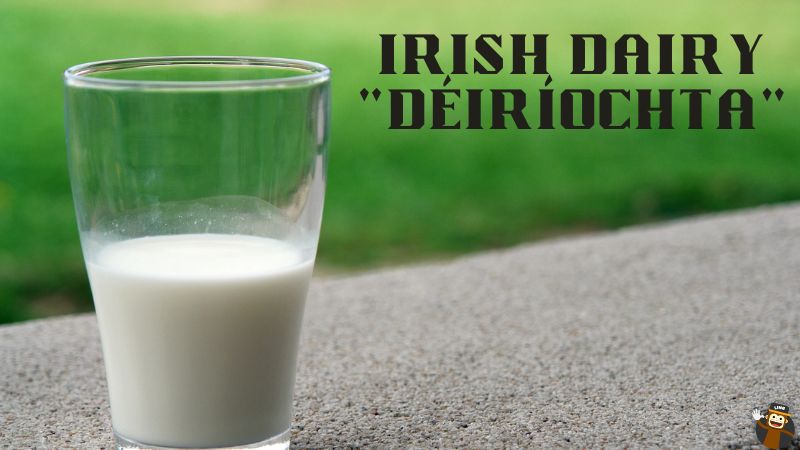
Ireland has permanent pasture land. The temperate climate of Ireland and annual rainfalls make the land suitable for cattle farming. The dairy of Ireland is quite well known and well appreciated for several centuries.
Greenery is a major specification of Ireland therefore also known as “emerald isle”. Milk (bainne) and butter (im) have been a common part of their food for centuries but now they have adapted to the new dairy food items like butter (im), cheese (cháis), and cheese milk (bainne cáis), dairy-based drinks and infant formulas.
Ireland is a great exporter of dairies like meat, butter and cheese. Almost 85% of dairy products are exported and are also the main source of their GDP. 10% of global formula milk is exported from Ireland.
Originally cattle were means of wealth for the Irish people, therefore, dairy items except meat were used by the poor people however the meat was used by the people of the upper class. Try the Irish creamed kale made by Irish dairy.
Fruits (Torthaí) And Vegetables (Glasraí)
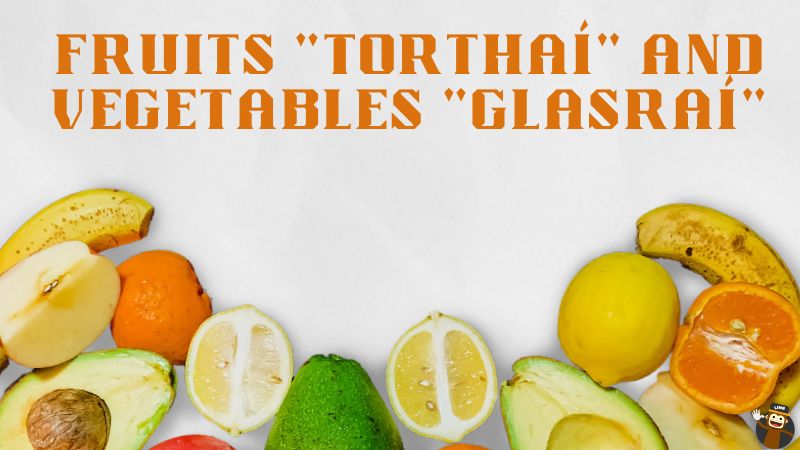
The land of the emerald isle is very suitable for crops and agriculture. The Tudor conquest of Ireland in the 16th century introduced the agro-alimentary system of agriculture. When the main focus was on grain-based crops, several vegetables were also produced.
The soil of Ireland is not known for producing fruits but it produces very fine and good quality berries (caora) and apples (ull). Fruit apple cake and fruit cake are the traditional dishes of Ireland.
Root vegetables are mainly produced in kitchen gardens as these are considered essential gradients for every kitchen. These vegetables include beetroot (biatas), cabbage (cabáist), carrot (cairéad), radish (raidis), onion (oinniún), turnip (tornapa), and ginger (sinséar).
Meat (Feoil)
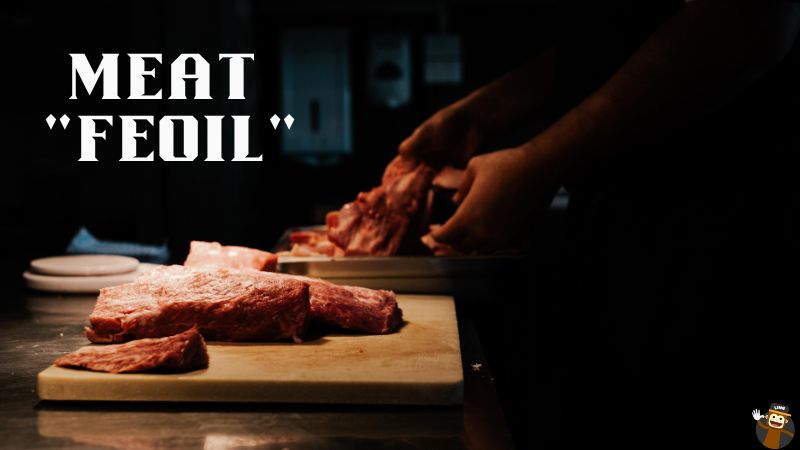
Meat (feoil) is also an important part of Irish cuisine. Beef (mairteoil), lamb (uan), and pork meat (feoil muiceoil) are typical and traditional ingredients of most Irish dishes. Soups and stews are made from meats and seafood which are used as the main dishes of their meals.
The typical meals contain potato (prátaí), meat (feoil), and cabbage (cabáist) as essential ingredients. Irish stew is a national dish of Ireland and is made using meat and vegetables.
Pig meat (feoil muiceoil) has the largest share among the other types of meats in the Irish diet. It is considered as fortune in the present and hope for the future. It makes up to 40% of all meat consumption. Irish dishes containing meats include pork, bacon, ham, sausages (pork sausages), corned beef, Irish stew, etc.
Fish (Iasc) And Seafood (Bia Mara)
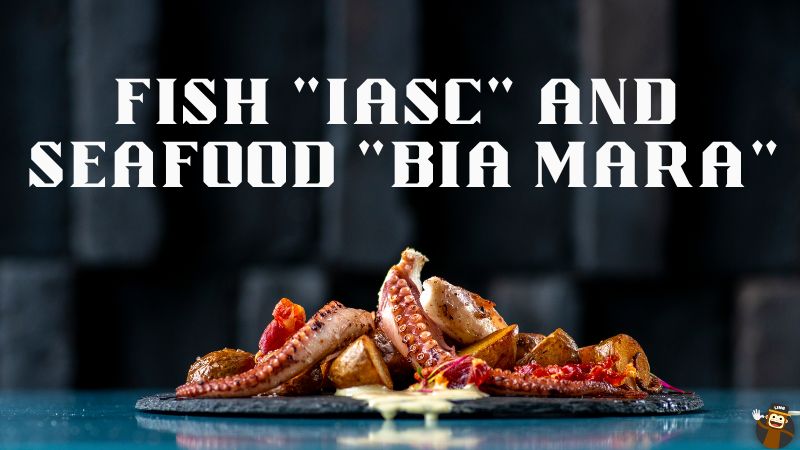
Another source of culinary wealth in Ireland is its shores and rivers. Fish (iasc) is used in both fresh and salted and smoked form and both the varieties are equally preferred. As it is easily available to the locals therefore residents of coastal areas are highly dependent on seafood.
Crabs (pertain), lobsters (gliomaigh), mussels (diúilicíní), salmon (bradán), oysters (oisrí), and trout are available in large quantities in the coastal areas of Ireland. It is equally popular among the rich and poor.
The most cherished and enjoyed variety of fish (iasc) is wild salmon (bradán fiáin) because of its nutritional qualities and tastes. Most of the renowned seafood dishes include crab sandwiches and seafood chowder. Try using these items on your birthday and make it even more special.
Bread (Arán)
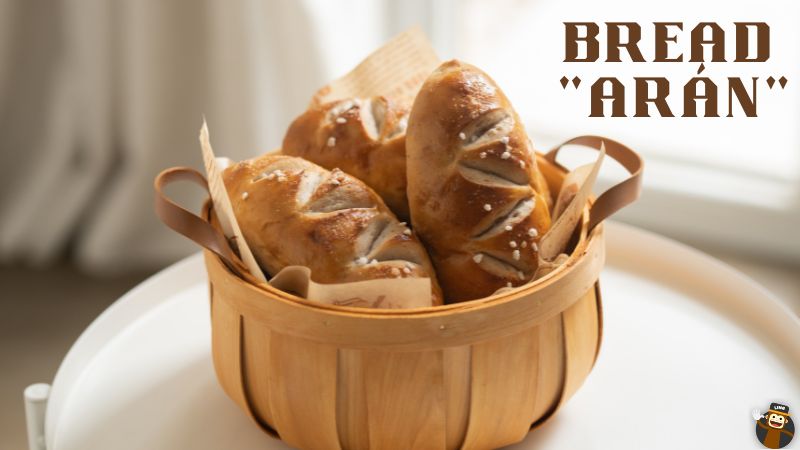
It is an intricate factor of Ireland’s culture. It was the staple food for the people of Irish before the potato (prátaí). Wheaten bread and oatcakes have been in use for a long time. It is used both as an ingredient and as a supplementary dish.
Bread (arán) retained its importance in Irish culture until the 16th century when the potato (prátaí) came to Ireland and replaced bread as a staple food. It regained its status post-famine when the interest of local Irish people tilted towards baking.
White flour (plúr bán) is used to make a cake-like bread. Similarly, soda bread is an extremely popular dish including bread (arán) along with fruits (torthaí), spices (spíosraí), eggs (uibheacha), and butter (im).
Food Ingredients In Regular Irish Meals
Irish breakfast is considered the most important and basic meal in their daily life. The most simple breakfast in Ireland includes eggs (uibheacha) and bacon (bagún). The formal breakfast includes mushrooms (beacáin), beans (pónairí), and white pudding along with eggs (uibheacha), bacon (bagún), and porridge (leite).
Ulster fry and fruit bread make the richest version of Irish breakfast. Irish fry up (generally referred to as a full Irish breakfast) includes soda bread, fried eggs (uibheacha friochta), sausages (ispíní), grilled tomatoes (trátaí), mushrooms (beacáin), baked beans (pónairí bácáilte), and pudding (maróg) (black or white) with a cup of coffee or tea served alongside. Fried potatoes and pudding (black or white) is a must.
Like breakfast, the variety of food ingredients of lunch varies from simple basic food of soup to soup served with vegetables where vegetables are given creamy texture and sandwiches. It may also include mashed potatoes with vegetables, slow-cooked meat, and gravy.
Dinner is the supper of the day where mostly the dishes of lunch are used but as it is a significant meal as all the family members are together at this time so a formal supper consists of starters like soup then the main variety of food varies from meat.
Foods In The Festivals Of Ireland
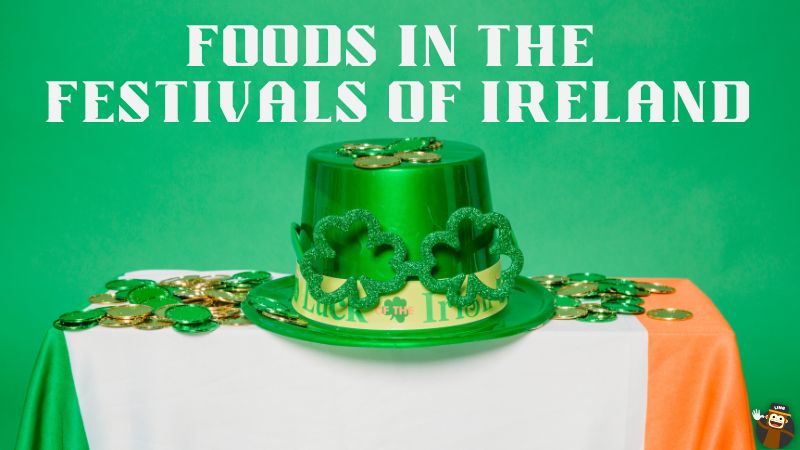
Festivals in Ireland are given special importance and thus feasts are organized. Some of the major occasions celebrated in Ireland are as follows:
Christmas Dinner
Christmas is an important festival for Irish people. Mostly, dinner is organized on Christmas day. It starts at lunchtime and extends till the afternoon or evening. The most common serving of this feast includes ham, turkey, cider, and Guinness. Wine is not a primary drink in Irish culture but sometimes wine is also presented with supplementary food items.
St Stephen’s Day
The 26th of December is celebrated as St Stephens’s day. Ham and turkey are important ingredients of this festival as well but five different potato dishes with three dishes of soups are also served. Plum pudding is a favorite dessert while gravy and other side dishes are equally important. Plum pudding is made months before Stephens’s day it is used when thoroughly soaked in brandy.
New Year’s Eve
The New Year’s Eve food includes mostly vegetables (glasraí) with meat (feoil) and whiskey. The most common dishes are corned beef, onions (oinniún), caramel (caramal), and cabbage (cabáist). Brandy and whiskey are also used in this eve.
St Patrick’s Day
A catholic feast day called Patrick’s day is celebrated on March 17. Fast is usually observed and a feast is organized. Pork, bacon, vegetables, and beverages are common parts of this day’s feast. The main dishes include corned beef and cabbage (cabáist), Irish stew, Irish seafood chowder, and shepherd’s pie. The side dishes are boxty, colcannon, Irish soda bread, and desserts consisting of apple tart, and puddings. Irish coffee and cocktails are common drinks of this feast.
Traditional Irish Cuisine And Their Food Ingredients
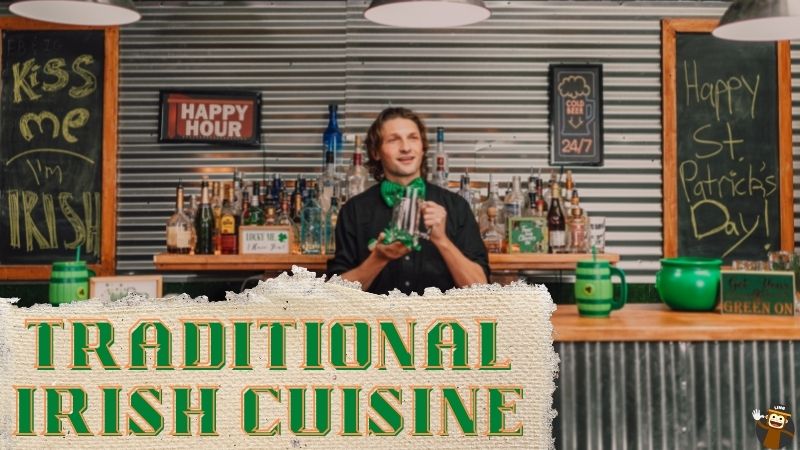
The land of the emerald isle is rich in cuisine as it has very delightful and widely known dishes tasty recipes, and cuisines. Most of the ingredients used in Irish dishes are locally produced and cultivated in its pastured land and fields therefore the cuisine is rich in ingredients and freshness. Wear your Irish clothes and start cooking!
The most common dishes of Ireland with different cooking methods and ingredients are as follows:
Irish Soda Bread
Irish Soda Bread is a traditional Irish dish and was originally made with just four ingredients including whole meal flour (plúr), buttermilk (bláthach), baking soda (sóid aráin), salt (salann), and black pepper (dubh piobar). Caraway and raisins (rísín) are the luxury ingredients added to give the modern texture and taste.
Irish Stew
The two main ingredients of Irish Stew include meat (lamb, mutton, or beef) and vegetables (glasraí). Onions (oinniún), potatoes (prátaí), and carrots (cairéad) are the root vegetables essential in their making. You can also try the vegetarian Irish Stew.
Shepherd’s Pie
Shepherd’s pie is baked meat pie with mashed potato used as a topping. It was invested as a way to use up leftovers but has proved itself crucial to Irish food identity. The vegetables used for pie include carrots (cairéad), onions (oinniún), peas (piseanna), and celery (soilire). Lamb meat was traditionally used but now beef has replaced it in most places.
Irish Seafood Chowder
It is equally popular as a stew. The ingredients include fish (iasc), shellfish (sliogéisc), and scallops (sceallóga). The vegetables include leeks (cainneanna), potatoes (prátaí), and onions (oinniún). It is most delicious when served with soda bread or brown bread.
Corned Beef And Cabbage
The original term used for this dish was Irish bacon and cabbage as bacon was the essential part of the recipe. When Irish people moved to other regions like America bacon got replaced with beef thus the common name is corned beef and cabbage as it had cabbage (cabáist). The ingredients include corned beef (or bacon), cabbage (cabáist), and potatoes (prátaí).
Final Thoughts
Through several social and political changes, Ireland has evolved its food practices and traditions. Irish food and cuisine have established themselves as renowned and appreciated cuisine in the world. Emerald isle has a unique food identity like many other countries of the world. Most Irish recipes and dishes include the indigenous ingredients of Ireland like root vegetables, meat, bread, grains, dairy products, seafood (bia mara), etc.
Potato (prátaí), is an emblem of this nation and has changed into staple food from a supplementary item. The food culture of Ireland has extended in the past few decades and thus included many other ingredients along with potatoes. Other vegetables include onions (oinniún), carrots (cairéad), cereals (gránaigh), barley (eorna), celery (soilire), cabbage (cabáist), tomatoes (trátaí), and carrots (cairéad).
As Jonathan Safran Foer puts it
“Food is not rational. Food is culture, habit, craving, and identity.”
Wrapping Up

Irish cuisine and dishes are becoming globally famous, especially in America and European countries. Irish soda bread, Irish stew, bacon and cabbage, shepherd’s pie, seafood chowder, etc., are the widely known traditional dishes of Ireland. You might also get them on Irish Airports. Others include Irish coffee, black and white pudding, Irish apple cake, one-pot stew, potato soup, smoked salmon, Irish fish pie, boxty, colcannon, etc. That’s it for this blogpost. Check out Ling App to learn more about this beautiful language and the Irish Culture. Good luck learning Irish language!
